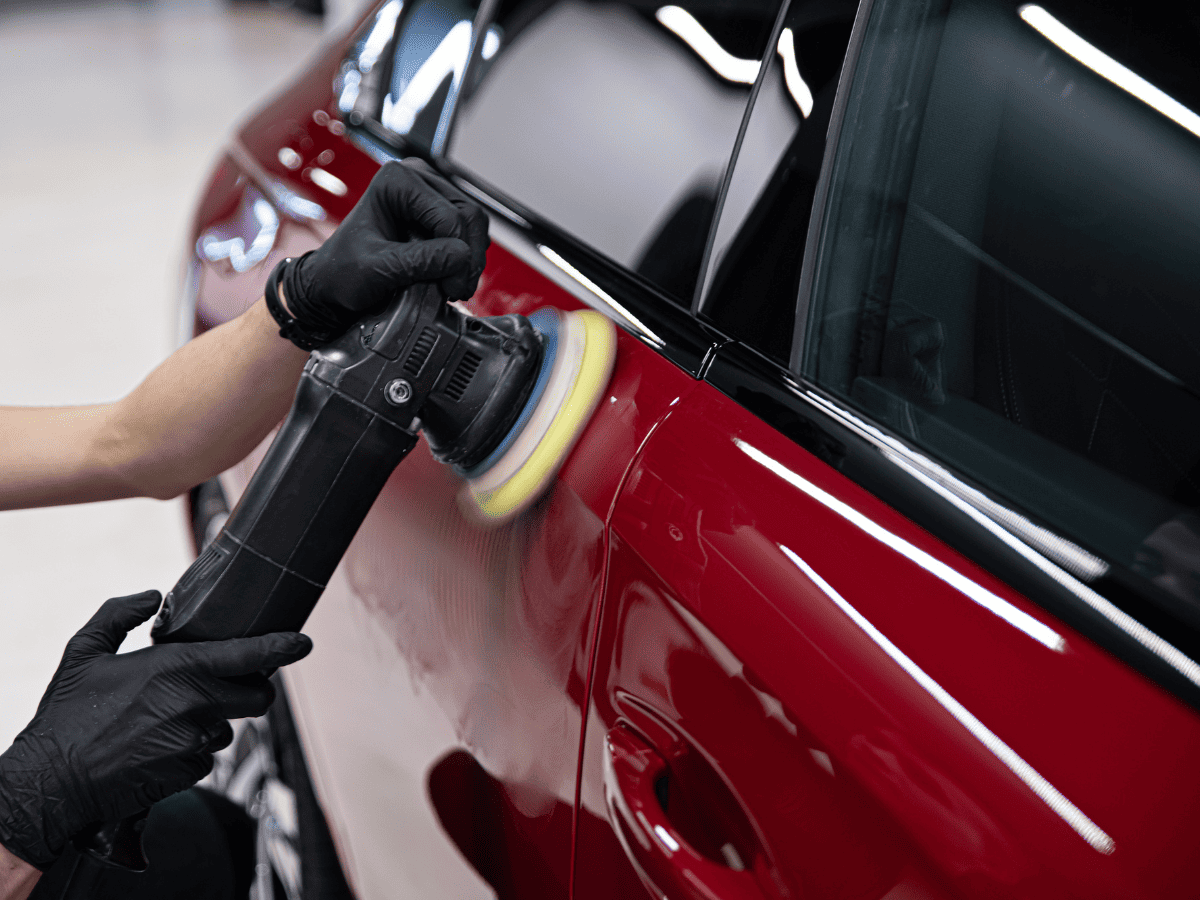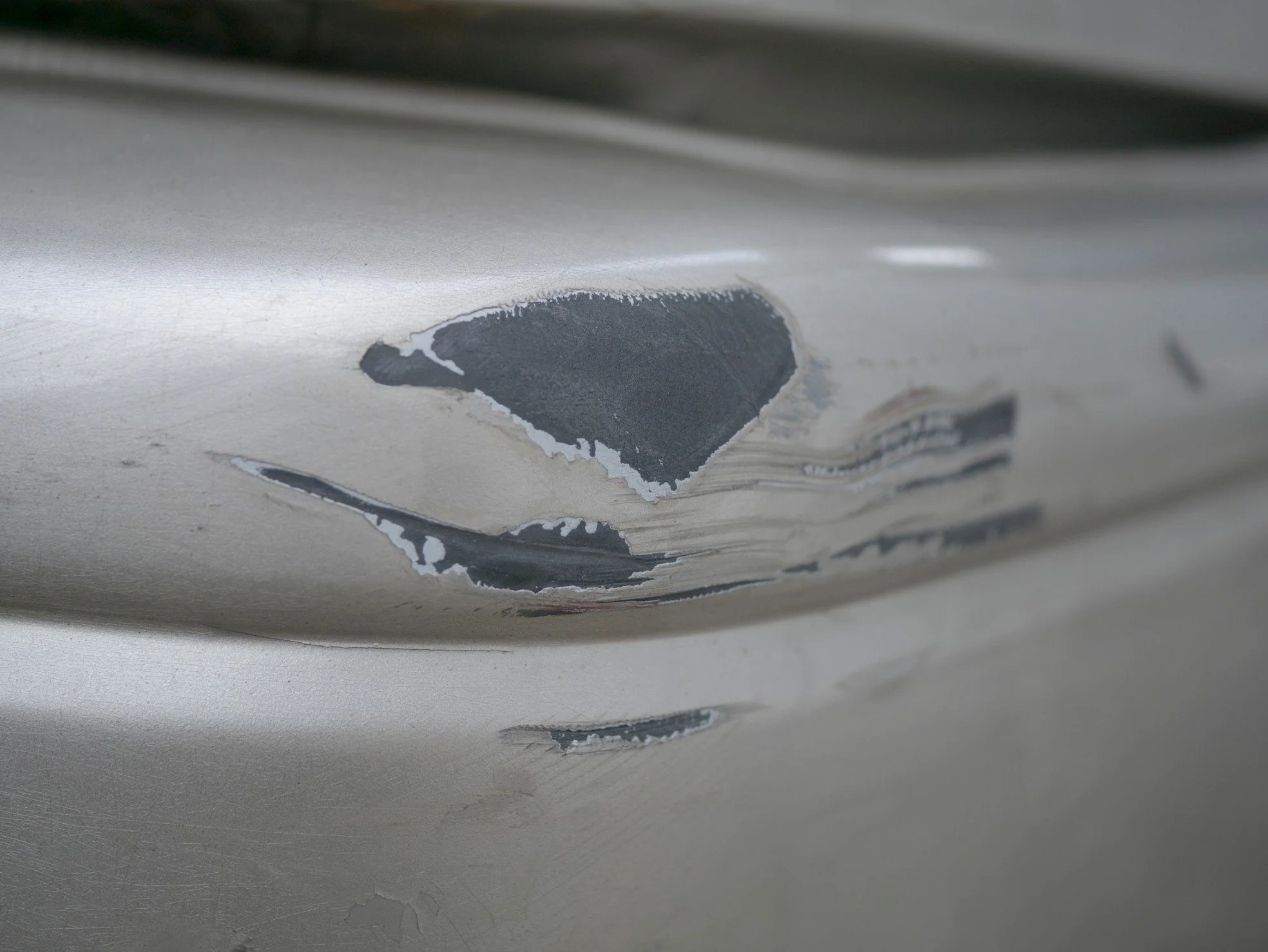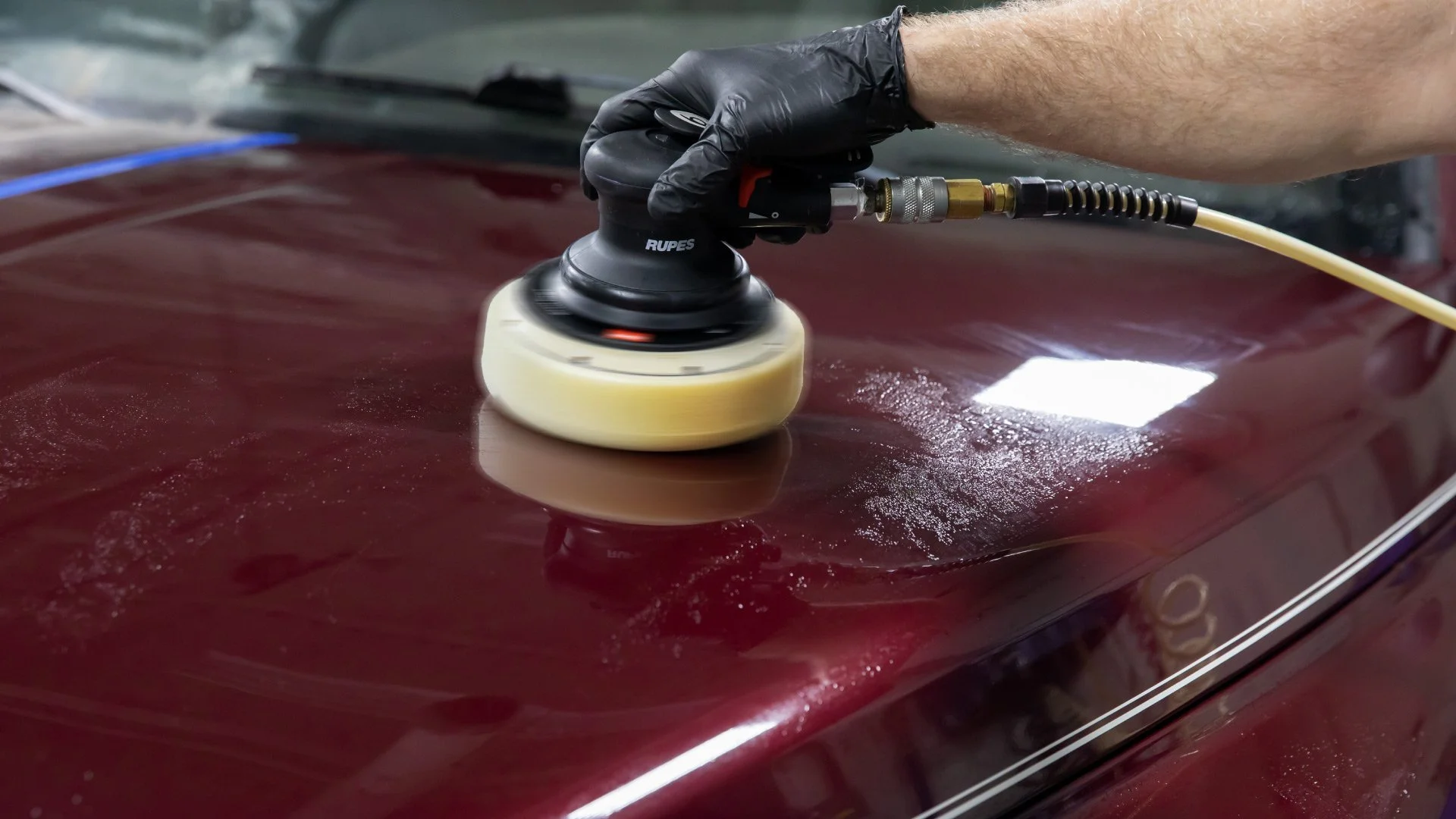
A Luxury Concierge & Mobile Auto Detailing Service.
Does Detailing Remove Scratches?
There's nothing quite like that sinking feeling when you spot a scratch on your prized BMW, Mercedes, or Tesla. One minute you're riding high, admiring the sleek lines and perfect finish of your vehicle, and the next, your stomach drops as you notice an ugly scratch marring the beautiful paint. We've seen that look of disappointment countless times, and we understand completely - your vehicle isn't just transportation; it's a statement about who you are and what you've achieved.
In the world of luxury vehicle ownership, appearance matters tremendously. That's why so many of our clients come to us with one burning question: "Does detailing remove scratches?" The answer isn't as simple as yes or no, which is why we've created this comprehensive guide to help you understand what's possible when it comes to restoring your vehicle's immaculate finish.
As professionals who've been restoring and protecting high-end vehicles for years, we want to share our expertise on this subject. By the time you finish reading, you'll understand exactly what detailing can and cannot do for scratches, what professional methods actually work, and how to protect your investment going forward.
Understanding Different Types of Vehicle Scratches
Before we can answer whether detailing removes scratches, we need to understand what we're dealing with. Not all scratches are created equal, and the type of scratch will determine the appropriate treatment method.
Clear Coat Scratches vs. Deep Paint Scratches
Modern luxury vehicles typically have a multi-layer paint system consisting of:
Primer layer (directly on the metal)
Base coat (the actual color)
Clear coat (the protective top layer)
Clear coat scratches are the most common and least severe. If you can't feel the scratch when running your fingernail across it, it's likely only affecting the clear coat. Good news - these are the scratches most responsive to professional detailing.
Paint scratches penetrate through the clear coat and into the color layer. You can usually feel these with your fingernail, and they might show a different color (often white or the primer color). These require more intensive correction.
Deep scratches that reach the primer or metal require specialized repair beyond standard detailing, possibly including touch-up paint or body shop work.
Identifying the Severity of Your Vehicle's Scratches
Here's a quick test we recommend to our clients to determine scratch severity:
The fingernail test: Run your fingernail gently across the scratch. If your nail doesn't catch, it's likely just in the clear coat. If it catches slightly, it's probably into the paint. If it catches deeply, it's a deep scratch.
The water test: Spray some water on the scratched area. If the scratch temporarily disappears when wet but reappears when dry, it's likely just in the clear coat.
Visual inspection: Clear coat scratches often appear white or lighter than the surrounding paint. Paint layer scratches may show the primer color (usually gray or white).
Clear coat scratches are the most common and least severe. If you can't feel the scratch when running your fingernail across it, it's likely only affecting the clear coat. Good news - these are the scratches most responsive to professional detailing.
Paint scratches penetrate through the clear coat and into the color layer. You can usually feel these with your fingernail, and they might show a different color (often white or the primer color). These require more intensive correction.
Deep scratches that reach the primer or metal require specialized repair beyond standard detailing, possibly including touch-up paint or body shop work.
Identifying the Severity of Your Vehicle's Scratches
Here's a quick test we recommend to our clients to determine scratch severity:
The fingernail test: Run your fingernail gently across the scratch. If your nail doesn't catch, it's likely just in the clear coat. If it catches slightly, it's probably into the paint. If it catches deeply, it's a deep scratch.
The water test: Spray some water on the scratched area. If the scratch temporarily disappears when wet but reappears when dry, it's likely just in the clear coat.
Visual inspection: Clear coat scratches often appear white or lighter than the surrounding paint. Paint layer scratches may show the primer color (usually gray or white).
Common Causes of Scratches on Luxury Vehicles in Florida
Florida's unique environment presents several scratch hazards for luxury vehicles:
Beach sand: Microscopic but abrasive, especially when caught in wash mitts
Salt air and residue: Creates a corrosive environment that can worsen existing scratches
Automatic car washes: Those spinning brushes are scratch factories
Improper detailing techniques: Using the wrong towels or methods
Parking lot incidents: Shopping carts, careless door openings
Foliage and landscaping: Tree branches, bushes along driveways
Our West Palm Beach and Miami clients face these threats daily, which is why proper protection and correction are essential for maintaining that showroom appearance.
Does Detailing Remove Scratches? The Truth Revealed
Now to address the central question: Can detailing remove scratches? Let's break down what's actually possible.
What Professional Detailing Can Actually Fix
Standard professional detailing services can effectively address:
Swirl marks: Those spider-web-like fine scratches visible in direct sunlight
Light surface scratches: Minor imperfections that haven't penetrated the clear coat
Water spot etching: Superficial damage from mineral deposits
Oxidation: Surface-level paint deterioration from sun exposure
These imperfections respond well to professional polishing techniques that are part of a high-quality detailing service. The results can be spectacular, with surfaces returning to a mirror-like finish that looks absolutely stunning under the Florida sunshine.
Limitations of Standard Detailing for Scratch Removal
However, it's important to understand what detailing cannot fix:
Deep scratches: Anything that penetrates to the primer or metal
Paint chips: Areas where paint has completely flaked away
Key scratches: These typically cut through multiple layers
Severe damage: Scratches from major impacts or accidents
Standard detailing has its limitations because it primarily focuses on enhancing and restoring the exterior appearance through cleaning, polishing, and protection - not major structural repair.
The Difference Between Polishing and True Scratch Removal
This distinction is crucial and often misunderstood:
Polishing works by leveling the surface. It removes a microscopic layer of clear coat to make the surface more even, which effectively eliminates or reduces the visibility of superficial scratches. Think of it as sanding down a piece of wood to make it smooth - you're not filling the scratch, you're leveling the surrounding area.
True scratch removal for deeper scratches requires filling the damaged area with new material (paint, clear coat, etc.) and then blending it with the surrounding surface. This goes beyond detailing and enters the realm of paint repair.
Many clients come to us expecting magic, but we believe in setting realistic expectations. When we assess a vehicle, we're honest about what can be achieved through detailing alone and what might require more specialized services.
Professional Paint Correction: The Real Solution for Scratches
When standard detailing isn't enough, professional paint correction becomes the answer for serious scratch concerns.
The Paint Correction Process Explained
Paint correction is a specialized, multi-step process that goes far beyond regular detailing:
Thorough assessment: Using specialized lighting to identify all imperfections
Surface preparation: Deep cleaning to remove all contaminants
Compound stage: Using abrasive compounds with machine polishers to remove deeper imperfections
Polish stage: Refining the finish with finer abrasives
Finishing stage: Final polishing for maximum gloss
Protection application: Sealing the corrected finish with wax, sealant, or ceramic coating
This methodical approach can take many hours for a single vehicle, but the transformation is often breathtaking. We've had clients literally gasp when we reveal their vehicle after paint correction.
Professional Equipment and Products Used
Paint correction requires tools and products far beyond what's available to the average consumer:
Professional-grade machine polishers: Rotary, dual-action, and forced rotation polishers that cost hundreds to thousands of dollars
Commercial-grade compounds and polishes: Formulated with precise abrasive particles
Professional lighting equipment: To properly assess the surface before, during, and after correction
Specialized measurement tools: To track clear coat thickness and ensure safe correction
This equipment, combined with years of training and experience, allows professionals to safely remove the maximum amount of imperfections without risking paint damage.
Before and After: What Results to Expect
Realistic expectations are important. Here's what good paint correction can achieve:
80-95% improvement in surface scratches and swirl marks
Significant reduction in the visibility of deeper scratches
Dramatic enhancement in gloss, depth, and clarity
Restored paint texture that feels smooth to the touch
However, it cannot:
Completely eliminate very deep scratches
Fix actual paint chips or gouges
Repair scratches that have penetrated to the metal
The most dramatic results are often seen on darker colored vehicles, where imperfections are more visible to begin with, and the improvement in reflection and gloss is truly remarkable.
DIY vs. Professional Scratch Removal: What You Need to Know
Many luxury vehicle owners first attempt DIY scratch removal solutions before seeking professional help. The market is flooded with products promising easy scratch repair - from consumer-grade scratch compounds to scratch pens and even toothpaste tricks. While these methods might provide minor improvements for the lightest surface scratches, the results are typically disappointing on premium vehicles with sophisticated paint systems. We've unfortunately seen too many vehicles that required more extensive correction after well-intentioned DIY attempts went wrong.
Professional scratch removal is vastly different from DIY approaches. High-end vehicles valued over $30,000, especially those with premium finishes, benefit from professional expertise. DIY methods often risk clear coat damage, uneven correction, visible buffer trails, and even worsened appearance. When vehicle scratches appear on highly visible areas or when DIY methods have failed, professional services become essential. The stark difference between amateur and professional results comes down to uniformity, proper technique, and protective measures that simply can't be matched with DIY approaches. For investments like a BMW, Mercedes, or Tesla, trusting professionals ensures your vehicle maintains its value and appearance.
The cost of professional scratch removal and paint correction varies based on vehicle size, current condition, correction level, paint hardness, and additional protective services. While prices typically range from $500-1500+, most clients view this expense as an investment rather than a cost. Professional services extend paint life, reduce long-term maintenance needs, preserve appearance, and protect resale value. In the premium vehicle market, immaculate paint condition significantly impacts buyer decisions, often allowing owners to recoup the entire correction cost when selling. When considering the psychological benefit of driving a flawless vehicle that continues to turn heads year after year, the value becomes clear.
Conclusion
So, does detailing remove scratches? The answer depends on the type and severity of the scratches, as well as the specific detailing services employed. Standard detailing can remove light scratches and swirls, while professional paint correction addresses more significant imperfections. For luxury vehicle owners, understanding your options for scratch removal is essential to maintaining both the appearance and value of your investment, especially in Florida's challenging environment.
When you notice scratches on your prized vehicle, don't reach for that DIY kit - consult with professionals who understand the nuances of luxury vehicle paint systems. Our best professional car detailers near me service brings exceptional expertise directly to you, saving valuable time while providing premium results. Your vehicle isn't just transportation; it's an investment deserving of expert care that protects its appearance, value, and the statement it makes about you.


